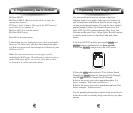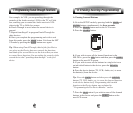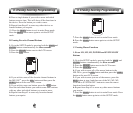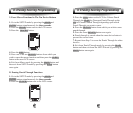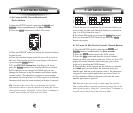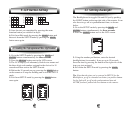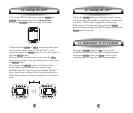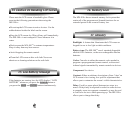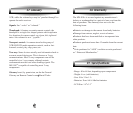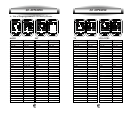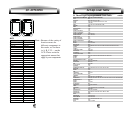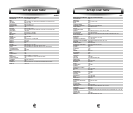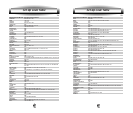
frequencies higher than the industry standard. Some
examples would be Bang & Olufsen, Kenwood (455KHz)
and older Pioneer Elite (1.125MHz). Such devices are
never preprogrammed into off-the-shelf remote controls
and can generally only be used with very specific learning
remote controls.
Infrared: "IR" A portion of the light spectrum below our
visible range, used by many modern remote controls to
transmit signals. The MX-500
TM
uses IR signals.
Infrared emitter: A light emitting diode used to transmit
infrared signals from a remote control. Generally, the more
and better the emitters, the stronger and wider the resulting
signal. A remote with strong emitters can generally be used
without pointing at the desired device. Emitters are also
partially responsible for any limits on the range of
frequencies that can be controlled. Emitters are always
placed at the "top" of a remote control and are typically
shielded by a red plastic window. The MX-500
TM
has 2 very
strong IR emitters.
Infrared receiver: The portion of a device that receives
infrared commands from a remote control. Since infrared is
actually light, it requires line-of-sight visibility for best
operation, but can still be reflected by items such as walls
and glass. Poorly placed IR receivers can also result in
what is called "tunnel vision," where they are set so far
back into the chassis of a device that the operational range
of any remote control is severely reduced.
Joystick: A feature on some remote controls, the joystick
is a single pointer which replicates five functions for menu
Discrete codes: Versions of toggle codes that only perform
one function. Some examples would be "POWER ON" and
"POWER OFF" or "VCR," "TUNER" and "DVD" receiver
inputs. These types of signals are most often used to ensure
your home theater components stay completely in sync for
powering on and off and changing device inputs. Some of
the preprogrammed codes in the MX-500
TM
contain discrete
codes. If your original remote contains discrete codes,
these can be taught to the MX-500
TM
as well.
Device: The MX-500
TM
remote control is capable of
controlling a certain number of devices, or pieces of
equipment. Examples of devices would be televisions,
DVD players, receivers or VCRs. Some devices, such as
receivers or dual-cassette decks, may be treated by some
remotes as more than one device. Also known as
components.
Firmware: Indicates the programming software stored on
the remote control. The MX-500
TM
remote can have its
firmware flashed (upgraded) to a newer version.
Frequencies: The range of infrared carrier frequencies that
a remote control is capable of learning or controlling. Most
remotes operate between 30 and 60kHz, however some use
higher and are thus known as high frequency.
The MX-500
TM
operates and can learn frequencies between
10 kHz and 100kHz.
Hard buttons: Refers to all physical (mechanical) buttons
on a remote control.
High frequency: Indicates an infrared system that employs
17. Glossary 17. Glossary
4847



